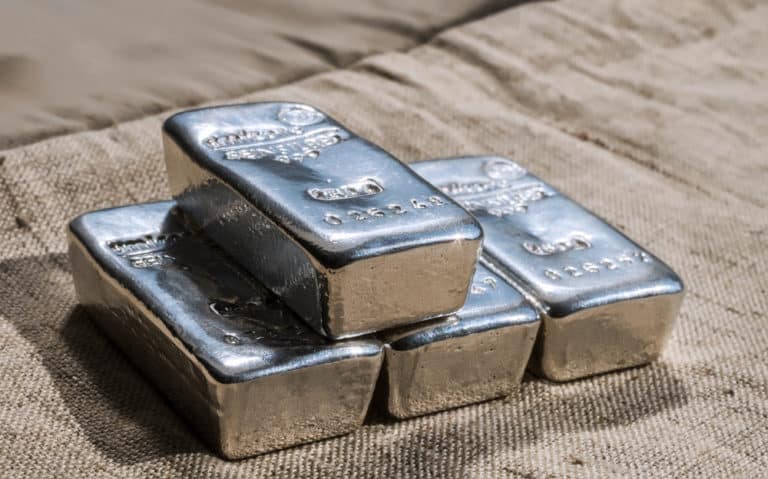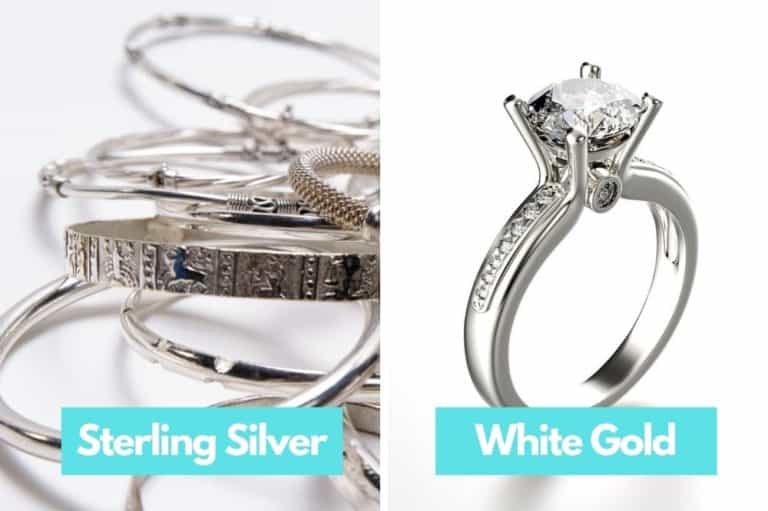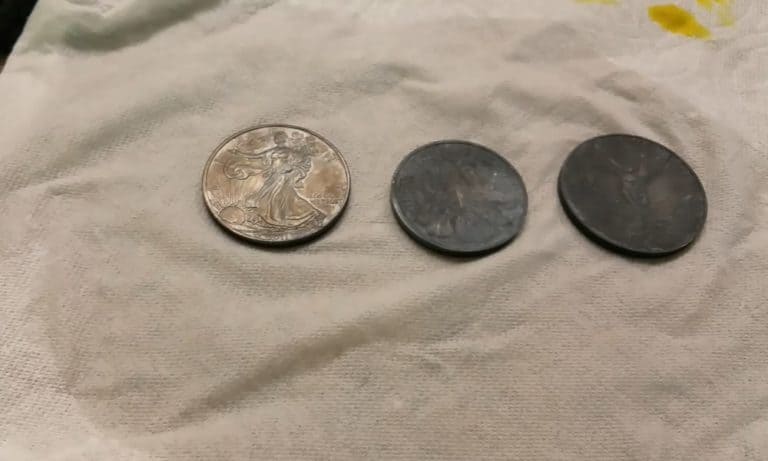
Although nickel silver looks like the real thing, it actually doesn’t contain any silver. The name refers to the color rather than the composition.
It’s often used for costume jewelry, causing confusion due to its shiny and silvery appearance. What is it if it’s not silver?
It has many other metals and also several different names. Take a few minutes to discover all about nickel silver, what it’s used for, and what are its advantages and disadvantages.
The History
Nickel silver dates back from the Qing Dynasty in China, which was in 1636. Chinese have a word for it, calling it “paktong,” which means white copper. That was probably because it’s made from copper and has a white-ish appearance.
It took more than a hundred years for nickel silver to find its way to Europe through trading. By 1823, people were competing who can make nickel silver look more like the real thing.
August Geither of Schneeberg and the Henniger brothers of Berlin won the competition. It was them who perfected the metal to what we call nickel silver today.
What is Nickel Silver?

Nickel silver contains no silver, but it’s made from 60% copper, 20% nickel, and 20% zinc. Although it doesn’t have any real silver, it can sometimes be silver-plated.
The thin plating on the external surface makes it even shinier and somewhat more durable. In most cases, silver-plating is identified with the EPNS stamp that stands for Electro Plated Nickel Silver.
It has many names, but it’s typically known as German or Argentan silver. You might also come across the name nickel brass. Alpaca silver contains copper, nickel, zinc, and tin, so it’s not quite the same.
Antique items made from nickel silver might be worth something due to the craftsmanship. Other than that, these items cannot be sold for any price worth your while.
The copper in it makes it more pliable and resistant to corrosion. It’s the nickel that gives it the white-silver looks we’re all drawn to.
It’s easy to melt thanks to zinc that lowers its melting point. However, zinc also strengthens it and gives it the well-known hardness of the metal.
Over time, it might develop a green/brownish patina due to oxygen exposure. Have you ever seen someone’s fingers turning green? It’s because of the fake jewelry most probably made from nickel silver.
You can prolong its life by keeping it in a Ziploc bag along with some tarnish paper. Make sure to squeeze the air out as well.
What is Nickel Silver for?
Nickel silver was first used for silver-plated cutlery and silverware. Car manufacturers used german silver before steel sheet metal came into the picture. The best example is the Rolls-Royce Silver Ghost of 1907 that contains some of this silver.
Today it’s used for so much more, and you’ll see it in making musical instruments, costume jewelry, ornamental silverware, electroplated table, decorative and architectural metalwork, and some chemical equipment.
You might also see it in plumbers’ and marine fittings, electrical relays, and telecommunication. Things like handrails, hair plates, belt buckles, tiaras, doorknobs, necktie slides, pectorals, heating coils, and pocketknife bolsters can all be made from nickel silver.
Nickel silver can be cast, wrought, rolled, forged, stamped, extruded, drawn, and machined. This makes it an easy fit for a wide range of industries and products.
Advantages
This metal is among the best choices for making costume jewelry. It’s malleable and easy to work with, allowing you to craft it into all kinds of designs.
As mentioned, you can process it in many different ways to create different patterns, textures, and shapes. Still, this one is durable and resistant, so it’s unlikely this rough handling will damage it.
Another great advantage is its price. Nickel silver is inexpensive, which is great for both buyers and jewelers. Although jewelers can’t really make much money on it, the metal is ideal for practicing.
It looks exactly like silver, but it’s cheaper and easier to work with. This allows many people to enjoy fine-looking jewelry without breaking the bank.
Disadvantages
There’s nothing wrong with it as long as you know it’s not real silver. Sometimes, the labeling can be deceiving, referring to nickel silver by other names without indicating that it contains nickel.
When there’s nickel, the jewelers have to identify it as nickel alloy and not silver alloy. Some sells might even try to pass it as sterling silver.
Don’t be fooled by its shiny appearance because nickel silver often looks like a more valuable metal. Plus, it contains the word silver in its name. That thing alone is enough for many people to think it’s the real thing.
It looks nice, and it can last a long time, but you don’t want to pay too much for it. It’s not as expensive as sterling silver, so it also doesn’t have the same value when you try to sell it.
People trying to sell it, saying it’s real silver, are lying to you just for the sake of making a profit.
Is it Toxic?

Many buyers are concerned because nickel silver leaves green traces on their fingers. Apart from wondering why the green appears, many are also worried if this is toxic.
The change happens because of oxygen exposure, and it’s not dangerous. It might leave a green trace on your finger, which you can avoid by removing your jewelry before washing your hands or showering.
Either way, this is easy to wash and won’t harm you.
However, the story is quite different if you exposed your food or beverage to it. According to Merck Manual, exposing any food or drinks (like boiling milk) to nickel silver might cause the copper to leach out.
This is toxic, and although it won’t kill you right then and there, it can cause cirrhosis over time. This is true even for low doses taken over a prolonged period.
Although it’s not toxic (when not consumed), it can cause an allergic reaction. Have you ever heard of someone having an allergy to “fake jewelry”? Well, that’s an allergy to nickel silver.
The allergy causes a heavy-duty rash that won’t go away for as long as nickel silver is in contact with your skin.
Nickel silver vs. Sterling Silver
Sterling silver has been around for a longer time and is purer than nickel silver. It’s made up of 92.5% pure silver and 7.5% of another metal, most commonly copper.
Since it’s purer and actually contains silver, sterling silver is worth more money. Although it doesn’t leave any green traces on your fingers, it’s easy to scratch, which calls for delicate cleaning.
Telling the difference might seem a bit complicated at first glance because the two look similar when you look at them. For this reason, you might come across people trying to sell nickel silver for far more money than it’s worth.
The best is to look for the “.925” marking on the interior of your silver piece.
The number indicates the piece has 92.5% of silver, meaning that it’s sterling silver. Bracelets and necklaces usually have this engraving on the clasp.
Nickel silver doesn’t have this stamp, but you can put it under an intense light to check if it’s reflective. Although nickel silver is shiny, it’s not going to reflect the light as well as sterling silver.
One thing you should keep in mind is that even sterling silver will tarnish. However, all you need is a cloth to make nickel silver shiny again.
Sterling silver requires a special tarnish-removing solution and more than just a cloth. It would be best if you had a professional do this for you to avoid any damage. Professional cleaning is usually quick and inexpensive.
Is it Worth Selling?
As mentioned, it doesn’t have any actual value because it doesn’t contain any silver. It’s made from nickel, copper, and zinc.
However, people wear jewelry made from nickel silver, so you can definitely make some money by selling it. That is if you have new jewelry to sell.
Old stuff is only worth it if it’s vintage and worth collecting. In this case, the material itself doesn’t have any value – it’s all in the rareness, age, or collectability.
For example, silverware might still be worth some money if it’s old, rare, and well-kept. But, it’s always best to have a professional look at it if you’re interested in selling.
In Conclusion
Nickel silver is a popular choice if you’re a fan of costume jewelry. It’s great for other items, but make sure you know that it’s nickel silver and not something more valuable.
Also, ensure that you don’t have any allergies when wearing this metal. The rash it causes can be quite uncomfortable and persistent.
Other than that, items made from nickel silver can be quite pretty. Although they don’t have any value per se, they’re often so shiny people won’t even notice by just looking at them.






